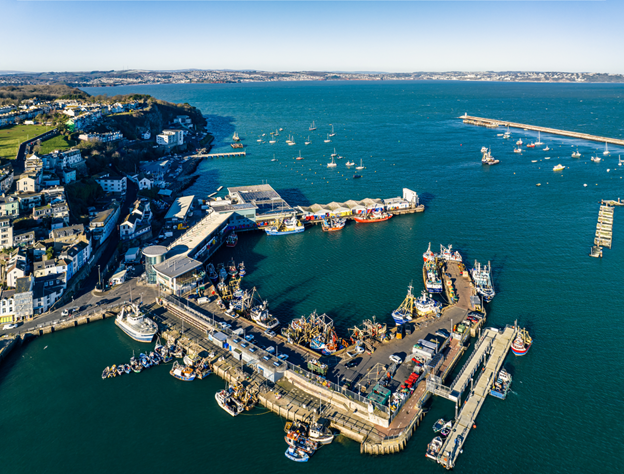The trilateral arrangement between the EU, Norway and the United Kingdom on jointly managed fish stocks in the North Sea for 2025 establishes total allowable catches (TAC) of over 958,000 tonnes, covering EU quotas of almost 463,000 tonnes of cod, haddock, saithe, whiting, plaice and herring.
The agreement on TACs includes a reduction for cod, consistent with the International Council of the Sea’s (ICES) advice. Fishing opportunities for North shelf cod were set in line with the precautionary advice by ICES for the southern component and at maximum sustainable yield (MSY) levels for both Viking and Northwestern sub-stocks. The EU, UK and Norway also agreed to carry over existing area closures.
TACs were set in line with ‘maximum sustainable yield’ – the highest amount of fish that can be taken from the environment without harming its ability to reproduce and sustain its population – for saithe, plaice and haddock, and below the MSY advice for North Sea whiting to cater for its interaction with cod and other demersal fisheries.
The EU, UK and Norway decided to set TACs for North Sea herring in line with the MSY advice by ICES and recalled their intention to review the management model in 2025.
The UK government’s view
UK Fisheries Minister Daniel Zeichner said: “This government will always stand up for the British fishing industry, which is the lifeblood of so many communities around our coastline.
That’s why I’m pleased to have secured a deal providing the UK fleet quota for stocks including cod and haddock worth up to £310 million, while maintaining sustainable levels of stocks for the long-term health of our industry.”
Sustainability is at the heart of the UK’s approach to negotiations, Defra stated, pushing for decisions based on the best available science to protect key stocks and support the long-term viability of the UK fishing industry. Advice from scientists at the International Council for the Exploration of the Sea (ICES) is the starting point for the UK’s approach and, where possible, catch limits have been set at or below these advised levels. Economic and social considerations are appropriately balanced alongside this scientific advice.
The numbers
2025 TACs for the stocks have been agreed as follows. Percentage change from 2024 is shown in brackets:
- North Sea cod: 19,910 tonnes (-20.04%)
- North Sea haddock: 95,862 tonnes (-5.48%)
- North Sea whiting: 111,861 tonnes (+45.85%)
- North Sea saithe: 71,638 tonnes (+7.12%)
- North Sea plaice: 155,755 tonnes (+14.18%)
- North Sea herring (A fleet): 388,542 tonnes (-23.86%)
The Agreed Records for the UK, EU and Norway trilateral negotiations can be read online.
UK-EU bilateral agreement
Alongside the trilateral agreement between the UK, EU and Norway, the EU and the United Kingdom also reached a bi-lateral agreement on fishing opportunities for 2025 for more than 88 total allowable catches (TACs) in the North-East Atlantic. The agreement will contribute to the management of fish stocks jointly managed by the EU and the UK.
The deal secures fishing opportunities for the EU fleet for about 428,000 tonnes, estimated to be worth almost €1.4 billion based on historic EU wholesale prices, adjusted for inflation. These are the fifth annual consultations on fishing opportunities between the EU and UK agreed under the EU-UK Trade and Cooperation Agreement (TCA).
UK Sea Fisheries Statistics 2023 published
Separately to the fisheries negotiations, the Marine Management Organisation (MMO) has published its annual UK Sea Fisheries Statistics 2023.
Key statistics include:
Fleet
In 2023 there were 5,418 UK registered fishing vessels. This represents a 54% reduction since 1993. Approximately 79% of the UK fleet is represented by vessels under 10 metres in length, of which 49% are administered in England. The majority of UK vessels operate within the non-sector (87%) with the remaining vessels in membership of a Producer Organisation.
Landings
In 2023, UK vessels landed 719 thousand tonnes of sea fish with a value of £1.1 billion. Compared to 2022, this is an increase of 12% in quantity and an increase in value of 5%. Landings into the UK by foreign vessels in 2023 was 19 thousand tonnes, which compared to 2022 represents a 6% increase. Landings abroad by UK vessels increased 13% to 279 thousand tonnes.
Effort
Since 2005, fishing effort (kW days at sea) by the over 10 metre fleet has decreased by around 34%. Fishing effort (kW days at sea) by the over 10m fleet increased by 1% between 2022 and 2023.
Trade
The UK is a net importer of fish. The UK’s crude trade gap (imports minus exports) in 2023 for sea fish is 274 thousand tonnes. This is smaller than 2022, where the gap was 316 thousand tonnes. In 2023 the UK imported 611 thousand tonnes of sea fish, with a value of £3.5 billion. It exported 336 thousand tonnes, with a value of £1.7 billion.

